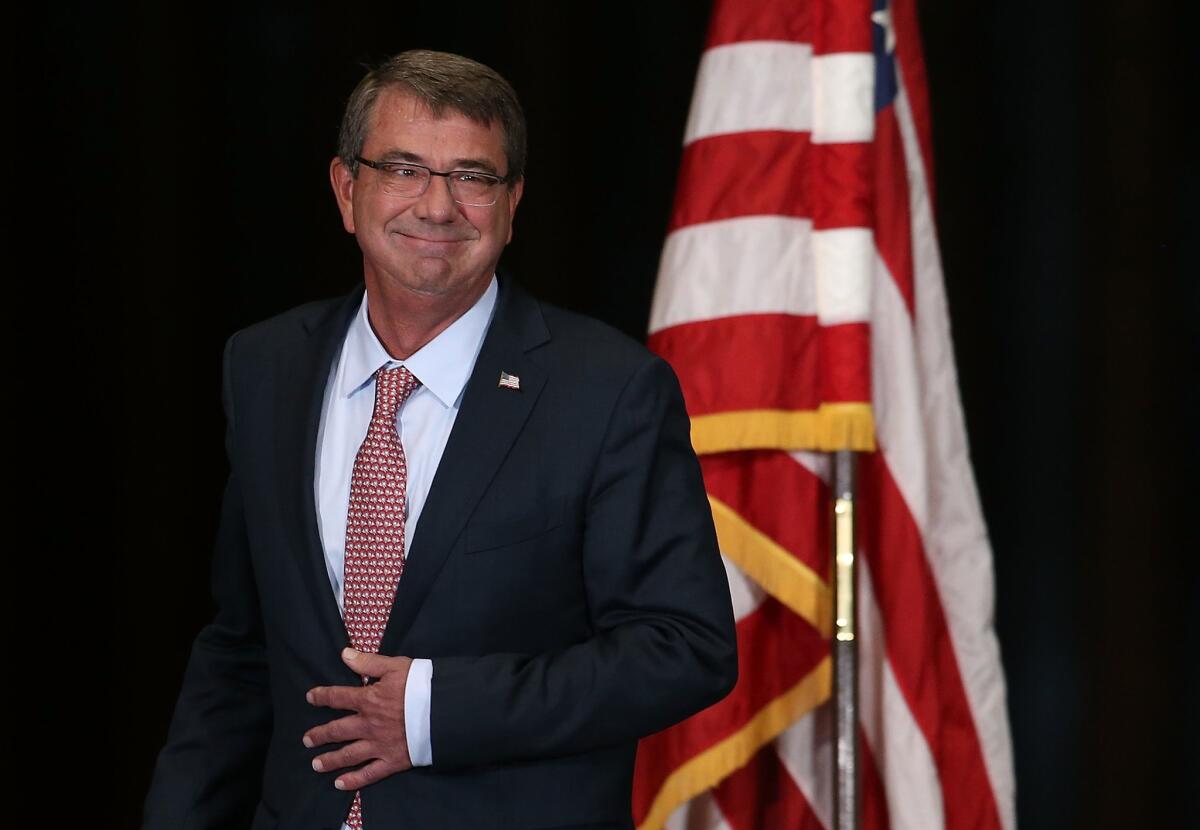Defense Secretary Ashton Carter courts tech leaders in Silicon Valley

U.S. Secretary of Defense Ashton Carter announced the FlexTech Alliance, a public-private manufacturing consortium based in San Jose, California, that will lead a new Manufacturing Innovation Institute to secure U.S. leadership in next-generation bendable and wearable electronic devices.
- Share via
Reporting from Moffett Federal Airfield — Defense Secretary Ashton Carter touched down Friday at Moffett Federal Airfield for his second appearance in four months to reassure Silicon Valley that the Pentagon views the region as an essential part of national defense.
He announced the Pentagon is investing $75 million in a consortium of 162 companies, called the Flexible Hybrid Electronic Institute, that specializes in wearable electronics. Colleges and local government will contribute an additional $96 million over five years.
“I’ve been pushing the Pentagon to think outside our five-sided box, and invest in innovation here in Silicon Valley and in tech communities across the country,” Carter said. “Now we’re taking another step forward.”
Flexible hybrid electronics are paper-thin sensors that could one day replace wiring and circuit boards on aircraft, ships or weapons. With the investment, the Pentagon believes it is making a bet on high technology that eventually could alert military members to electronic failures and structural problems.
For two decades, no defense chief showed up in this high-tech community. Carter, who spent a year working in Silicon Valley and taught at Stanford University, has repeatedly tried to reach out to the tech community.
He arrived at this sprawling former naval base, where the U.S. Navy housed its blimp-like airships during World War II. The massive wooden hangars that stored the airships still stand, but now it houses robots, drones and other technology being developed by Google.
In his second tour through Silicon Valley, Carter plans to visit LinkedIn’s campus in Mountain View and the Pentagon’s Defense Innovation Unit - Experimental, which was launched in April to scout promising technologies.
Carter has long warned of gaps in U.S. cyberdefense and has lambasted the Pentagon procurement system for taking too long to get useful technology to the military.
His visit is a continuation of the department’s attempt to repair relations with Silicon Valley, which sees the Pentagon’s slow bureaucratic way of doing business as the antithesis of the fast-pace start-up culture.
Carter has tried to reach out to the tech sector to bring in young professionals into the defense enterprise, who otherwise would not be interested.
“For those interested in foreign policy and national security, there are lots of interesting challenges and problems to work on,” Carter said. “And that’s also true for those interested in technology. But the intersection of the two is an opportunity-rich environment.”
Follow @wjhenn for military and defense info.
More to Read
Sign up for Essential California
The most important California stories and recommendations in your inbox every morning.
You may occasionally receive promotional content from the Los Angeles Times.











